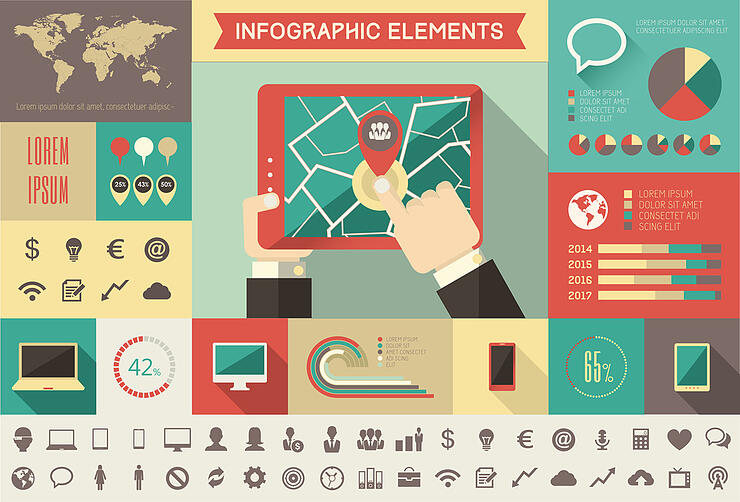You’ve heard the (now common) saying “content is king”?
Well let’s face it – if content is king it’s a terrible tyrant!
Most of us live in information overload – there’s simply too much content to keep up with, let alone read and absorb. If you’re expending a marathon effort to fight your way through dense, useless or boring content to find that one jewel you’re after…so too is your audience.
Now in financial services our audiences range from consumers, to channel partners and institutions such as asset managers or super funds. It’s stating the obvious to say that all have different information needs – but they also have the same basic need for simplification without having quality content dumbed down.
Hence the rise of the infographic.
With time poverty the universal modern malaise we can now see clear trends on social media – while links to more useful pieces of (text based) information are still shared, there is a huge trend towards sharing visual information instead. The demand for visual information is going to increase as society goes mobile. Images are simply a better communication tool than text for the small screen of your tablet or smartphone.
What is visual information?
It is anything that captures information and turns it into graphics. Think of animations or the good old bar or pie charts. They are visual methods of conveying complex information. Think of videos and the growing giant that is YouTube. It has much more to it than music videos.
Visual representation enables our audiences (regardless of level of sophistication) to absorb information faster and more easily than they can through the written word.
So back to infographics, which are simply large images that capture detailed information and lay it out in a format that is easy to follow. Why are they so popular? Because at a glance they enable us to quickly understand complex information and how it fits together.
So, what makes a ‘winning’ infographic?
First, listen to Brian Solis when he says “The key is to think less about the packaging and more about the story you want to tell”. Don’t create an infographic just because everyone else is doing it. It must serve a purpose and share a real message, not just blobs of data or a marketing message.
He says “… if creative professionals and brands overall do not understand what it takes to make content or campaigns engaging, optimism and support for experimentation fades and as such, budgets dwindle”. While the look of the piece is vital, the content is still king.
So how to begin?
- Start with what your audience cares most about. What is important to them? What is the message you would like to get across to them? Be clear about the purpose of your visual message.
- Dig deep into your existing resources, or perhaps commission research to support your message. What evidence would you like to present in support of your message?
- Work with a graphic designer. The image must look great if it is going to work. It should be clear and the images easy to see and understand. If the message is great but the infographic doesn’t look fabulous your audience won’t bother with it.
- Make sure it tells a story. It is the story that puts your information into context and it is the story that will connect with your audience – tell a clear story leading you from start to finish.
You’re not creating new information or messages – you are simply sharing them in a different way.
And finally – it should go without saying – you need to make sure, ultimately, that your message is still clear and worth sharing.
Then share away…there’s no point going to all that effort to not get your beautiful new infographic ‘out there’.












